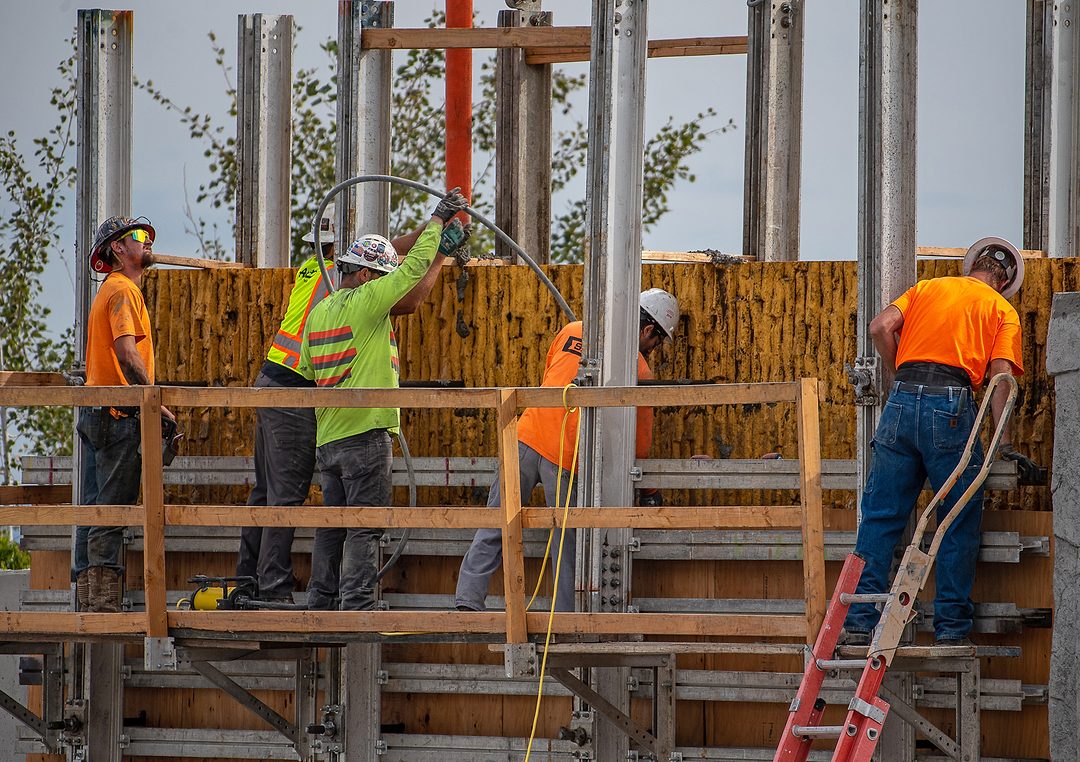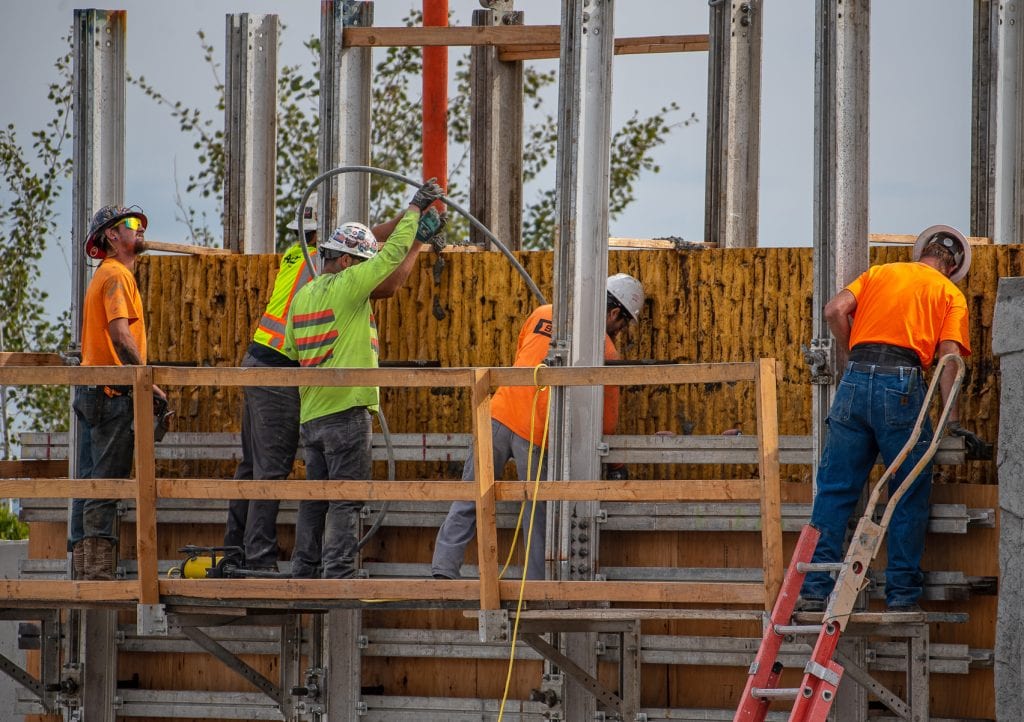
Home » Market Overview: Tri-Cities boasts stable economy
Market Overview: Tri-Cities boasts stable economy

October 30, 2018
More than 1,000 new homes have been built in the Tri-Cities since the start of 2018, but this is barely sustaining an appetite for housing in a market where supply can’t keep up with demand.
“We are still in a very hot sellers’ market,” said Lola Franklin, chief executive officer of the Tri-City Association of Realtors.
The number of available homes for sale is not fully meeting the needs of buyers. The total number of active residential listings on a single day in August 2018 was 680, compared to 825 three years earlier.
“While the inventory numbers are coming up — some due to new construction and new developments coming online — it’s happening slowly and housing prices are increasing as well, because of the lower inventory and higher demand,” Franklin said.
The number of single-family home permits for the Tri-City area through the end of August 2018 was 1,046, which includes homes built in Kennewick, Pasco Richland, West Richland, Benton City, Prosser and unincorporated Benton and Franklin counties.
The permit total was 972 through the same period last year, according to the Home Builders Association of Tri-Cities.
Despite a slight increase in supply, prices are still rising amid robust demand.
The average price for a home sold in August 2018 was $307,000, compared to $229,100 in August 2015.
The median price for the same time period also increased from $206,000 to $293,000.
Interest rates for mortgages have remained low and the allure of a higher return for a home might inspire homeowners to list theirs to make a tidy profit or to “upsize.”
“You look at people that want to move up and they say, ‘Yeah, the equity in my house is way up. I want to sell,’ but the fact is, ‘I’d have to buy another one here,’ ” Franklin said. “The prices are going to be higher on that one, too, so that’s another thing that affects the inventory. We’re not seeing the move up.”
Carl Adrian, president and chief executive officer of the Tri-City Development Council, believes the Tri-City housing market feels a squeeze from retirees who choose to remain in the place where they once worked and raised a family.
“They’re not leaving their house and moving someplace else, which makes a house available. They’re staying in it. So, if somebody moves in to take the job that they retired from, they need to have a new house for that worker. I think that can put some pressure on the market more than it might in some communities where people say, ‘I’m done, I’m going to Florida,’ ” he said.
Tri-City homes below $300,000 are in the most demand and usually on the market just briefly before going under contract.
“Anecdotally, pricing affects time on the market. Anything under $300,000 will be sold in a day or two, and over that, it just depends on location and price to see how long it will stay,” Franklin said. “Nothing’s staying on the market a long, long time like it used to be, for any priced house now.”
Real estate agents in the Tri-Cities tend to see multiple offers for homes with an average asking price of $300,000 or below.
Franklin has seen escalation clauses used on some lower-priced homes, which allow a purchase offer to increase up to a set amount, on behalf of the buyer, in the event multiple offers are made on a single home at the same time.
Franklin said the Tri-Cities is fortunate to have such a robust housing climate.
“Our area experienced virtually no recession,” she said. “It was uncommon. We didn’t have the huge rising prices or the foreclosures and short sales that other areas had. We just didn’t. The Tri-Cities weathered that extremely well. Our market was stable and is still stable.”

This has driven both out-of-town buyers and investors to seek homes in the Tri-Cities.
The stability of the market also has driven employment in construction, both for residential and commercial building.
The current employment rate in non-farm construction is up a full index point since July 2002, without suffering any real setbacks along the way.
Comparably, non-farm construction employment in the United States dipped from July 2008 to July 2010 before recovering to the 2002 employment level in 2016.
The 2018 population of the Tri-City metro area, including Benton and Franklin counties, is 289,960, up 2 percent year over year and more than 14 percent since 2010.
Adrian said most cities around the state have seen population increases around 12 percent for the same time period. He credits an economy that is no longer fully-dependent on the status of Hanford.
“I think of Hanford kind of like a state capitol. It brings a fairly significant amount of money into the community every year, and as a result, the base of the economy seems to be pretty solid,” Adrian said. “And then, what we’re seeing is increased diversification.”
Last year, the state Employment Security Department reported total non-farm employment for Benton and Franklin counties was 121,427.
There continues to be a demand for those employed in the construction industry, with many builders struggling to find subcontractors. A national cultural shift has encouraged more young adults to pursue baccalaureate degrees instead of certification in the skilled trades.
“The amount of tradesmen is diminishing,” said Jason Spence, vice president of Central Washington for Pahlisch Homes. “Each year, it gets a little slimmer.”
“Every contractor in town is so busy and slammed,” said Gretchen Payne, project administrator and office manager for G2 Construction of Kennewick. “We’ve had an incredibly successful year and have had to turn work down.”
G2 works exclusively in commercial construction and is not a union shop, so it is limited to hiring non-union workers.
“The trades are still a challenge. But we call ourselves the G2 family and most people who are with us have been with us for years. We don’t have a lot of coming and going,” Payne said.
Finding available land for both the commercial and residential markets remains a challenge for the building industry.
“The last three years have been the tightest it’s been,” Payne said. “Land has been going up really quick. Land we thought was available six months ago is gone.”
In 2017, the construction industry put about 8,000 people to work across Benton and Franklin counties. This is up about 1,100 people year over year, an increase of 16 percent. In the five years prior, the construction industry had never had a year-over-year increase in the double digits, and fell 10 percent in 2012, compared with the year before.
“Most people in the community have forgotten what a downturn might look like. It’s just always been good,” Adrian said.
The successful housing market also continues to drive the amount of people employed in the real estate industry.
“We’ve had a significant increase in the number of people getting licensed and started in the profession,” Franklin said. “We’re busier than ever.”
The Tri-City Association of Realtors has 890 licensed real estate agents, up from 625 in 2011 when Franklin took over as CEO. She said the largest jump in agents has come within the last two years.
Looking ahead to 2019, “I continue to be pretty bullish,” Adrian said. “I think we’ll continue to see growth in employment in the construction industry as long as we only have 500 or 600 single-family homes on the market when realtors say you should have 1,200. There’s going to be continued pressure.”
For its short-term outlook, the Employment Security Department predicts 500 additional jobs in construction in Benton and Franklin counties in the second quarter of 2019, up from 8,900 for the same period in 2017.
“I think it would be good if we saw a continued strong construction industry that maybe took a little pressure off of rising house prices, too,” Adrian said.
“It’s still going to depend on the numbers where the tipping point is,” Franklin said of lower housing prices. “It’s anyone’s crystal ball whether it’ll be this year or the next.”
Construction + Real Estate
KEYWORDS october 2018





